Getty Images
When the Princess of Wales arrived at the Royal Albert Hall to watch the Festival of Remembrance on Saturday night, her outfit followed a now well-established formula for the uniquely somber occasion in the royal calendar: a subdued black coat-dress, some sentimental jewelry (in this case, Diana, Princess of Wales’s Collingwood earrings), some “relatable” jewellery (in the form of a Monica Vinader necklace), and an aspirational flourish (a Classic Mini Flap Bag by Chanel). And come Sunday morning? She was back in another black coat-dress, this time by Catherine Walker, to appear at the Cenotaph, a trio of poppies fixed to her lapel and the late Queen’s Bahrain Pearl Drop Earrings in her ears.
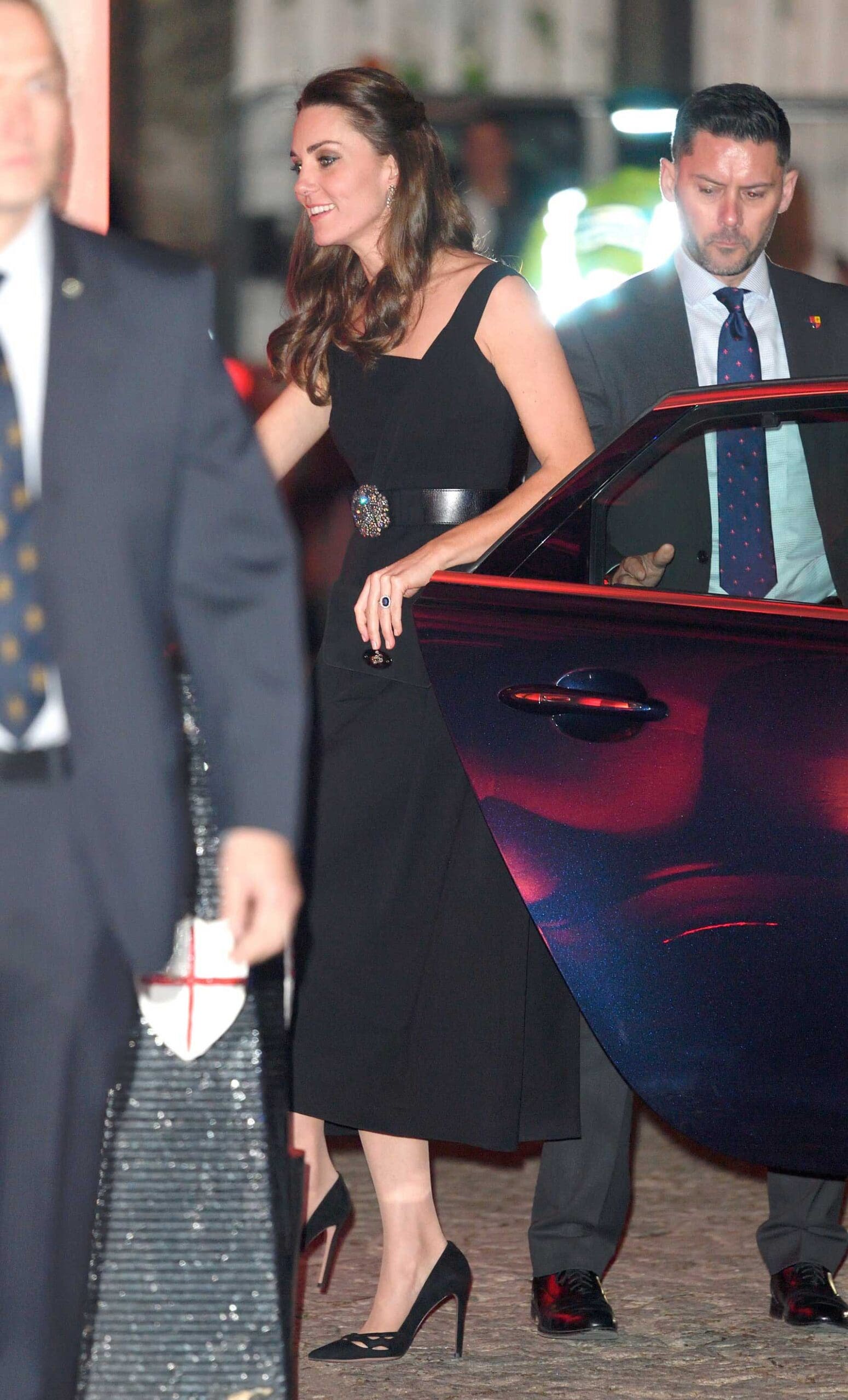
Both looks were classic Kate, and wholly appropriate for a weekend devoted to honoring those who lost their lives in service—and yet they still, in a way, felt unusual, given how rare it is to see Windsor women in black. It’s often been reported that, barring Remembrance Weekend each November, members of the royal family are prohibited from wearing the shade head-to-toe unless in mourning, when their crepe and veils are traditionally paired with pearls. As is often the case with Buckingham Palace protocol, however, there have been exceptions through the years, as and when senior royals decide to momentarily cut loose.
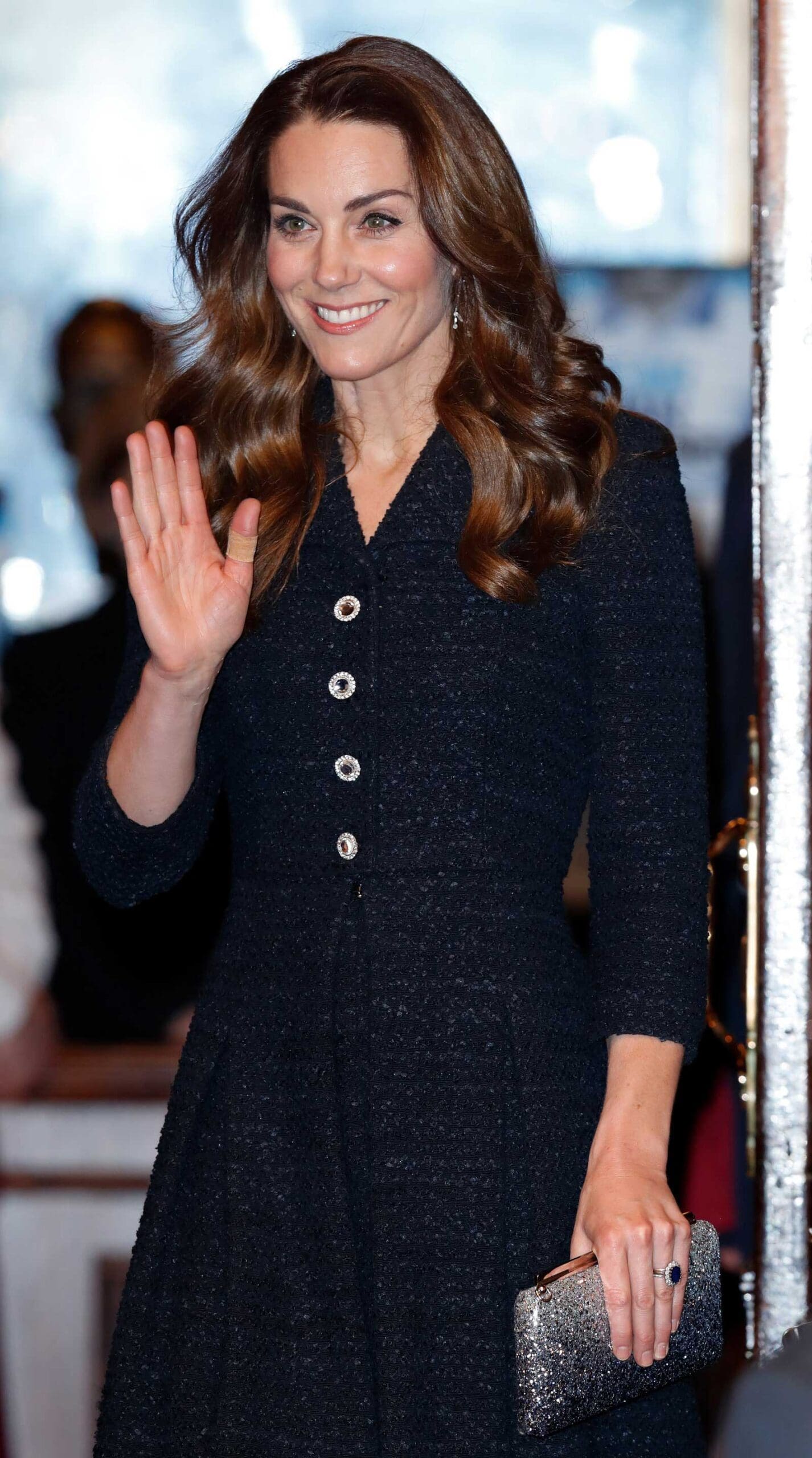
The Princess of Wales—whose sartorial MO in the 13 years since marriage might best be summed up as “by the book”—has embraced all-black on occasion, wearing Preen at a Wellbeing in Schools talk in 2016; Eponine for a special performance of Dear Evan Hansen in 2020; and Alexander McQueen to visit the British Embassy in Paris in 2017. Compared to the hundreds and hundreds of appearances she’s made in, say, blue, however, it’s a noticeably small amount. Tellingly, even in 2018, when the Time’s Up movement declared a blackout on the BAFTAs red carpet, Kate dressed in a Jenny Packham gown rendered in deepest green, a black ribbon tied around her pregnancy bump, and a suite of emerald jewelry, intended to signify hope.

Diana, however, was far more of a fashion renegade, and understood the power of an LBD long before anyone had coined the term “Revenge Dress”. Take the taffeta Elizabeth and David Emanuel gown she plucked off the rack in early March 1981, just after her engagement to Prince Charles had been announced, and wore to a recital at the Goldsmith’s Hall. “Black to me was the smartest color you could possibly have at the age of 19,” she recalled years later. “It was a real grown-up dress.” It was—and it was also carefully chosen to nip the press’s idea of her as a demure English rose in the bud.
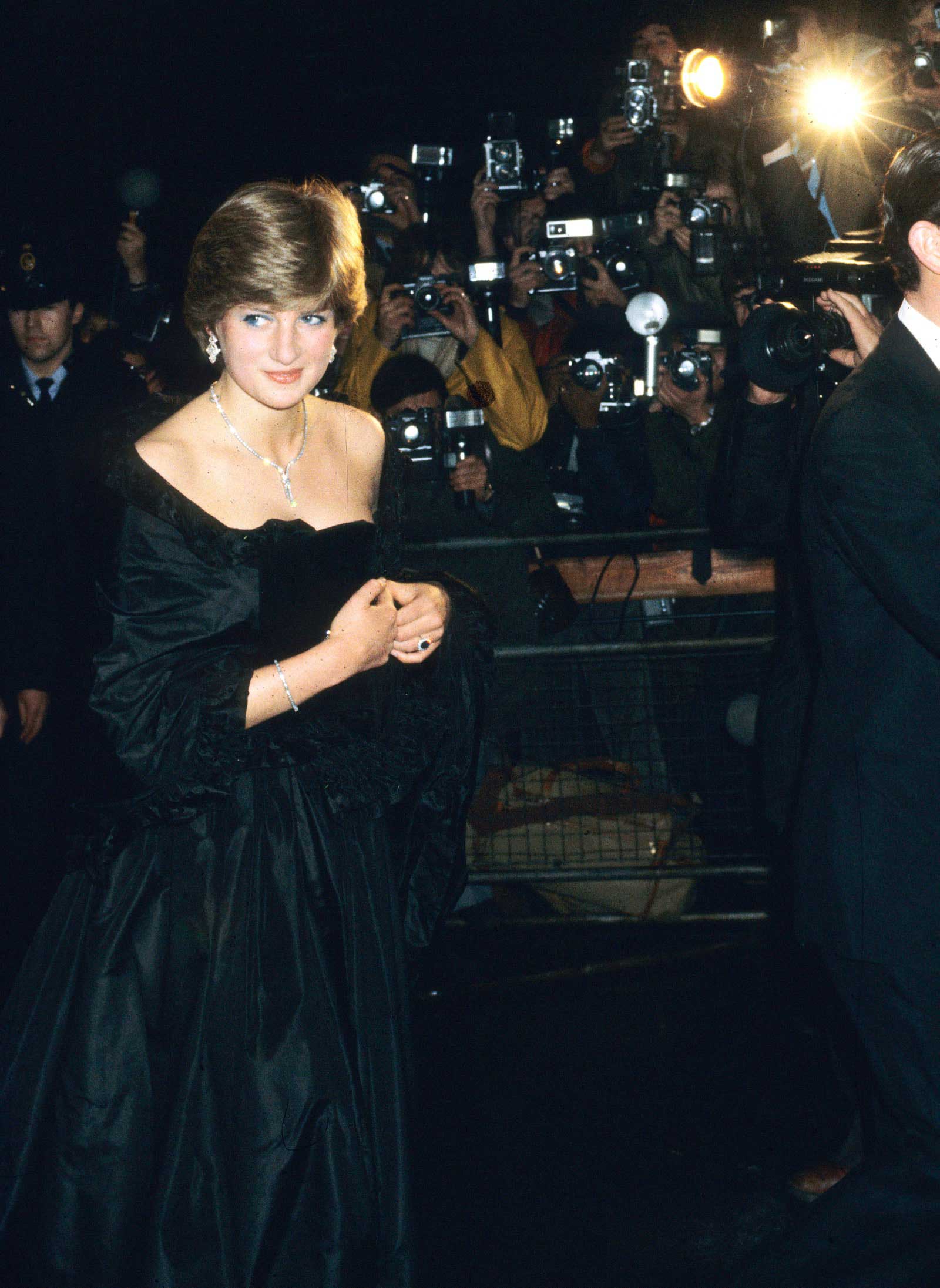
As biographer Tina Brown put it in The Diana Chronicles: “When she stepped out of the limousine in that nipple-busting, black taffeta eye-popper it was the greatest moment of sexual theatre since Cinderella swapped her scuffed scullery clogs for Prince Charming’s glass slippers.” Charles, for what it’s worth, may have felt differently: “I remember walking into my husband-to-be’s study and him saying: ‘You’re not going in that dress, are you?’” Diana reported to Andrew Morton. “I replied: ‘Yes, I am.’ And he said: ‘It’s black! But only people in mourning wear black!’” The shade would pointedly become a hallmark of Diana’s wardrobe post-separation: recall her Versace Tank Dress for a preview of Apollo 13 in 1995, her Jacques Azagury design for the centenary of the Tate in 1997…
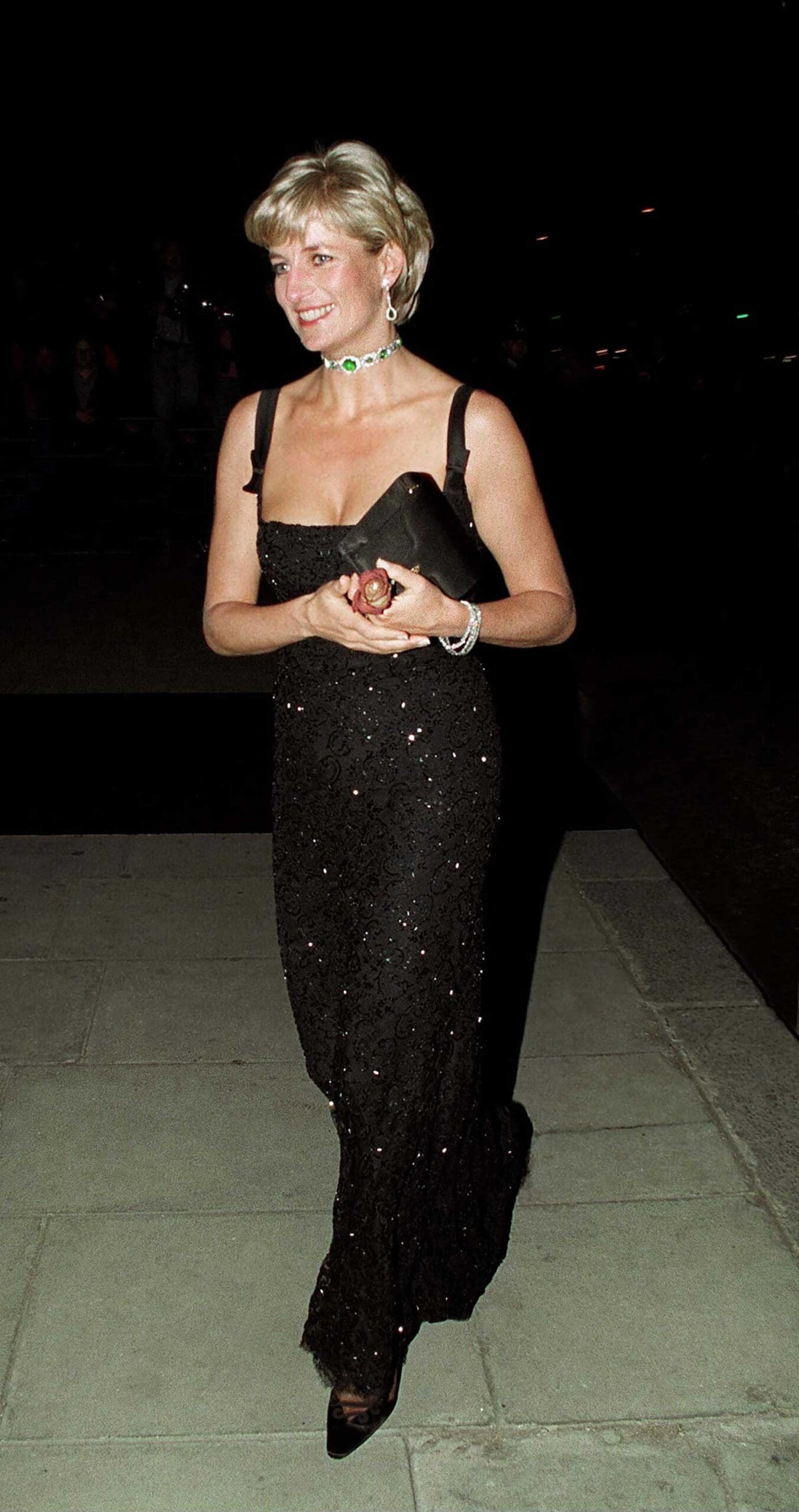
Then, of course, there’s the late Queen Elizabeth II, whose clothing, to quote Vogue’s Sarah Harris, “never failed to convey a message of optimism, diplomacy, hope and stability”. Yet even she tapped into the seductive power of black in her twenties, largely at the encouragement of British couturier Norman Hartnell. In 1953, for example, the Queen attended a performance of Because You’re Mine in Leicester Square in a “Magpie” dress conceived by Hartnell that caused a frenzy in the press. Within 24 hours, copies had appeared in shop windows across London—a startlingly quick turnaround in the ’50s.
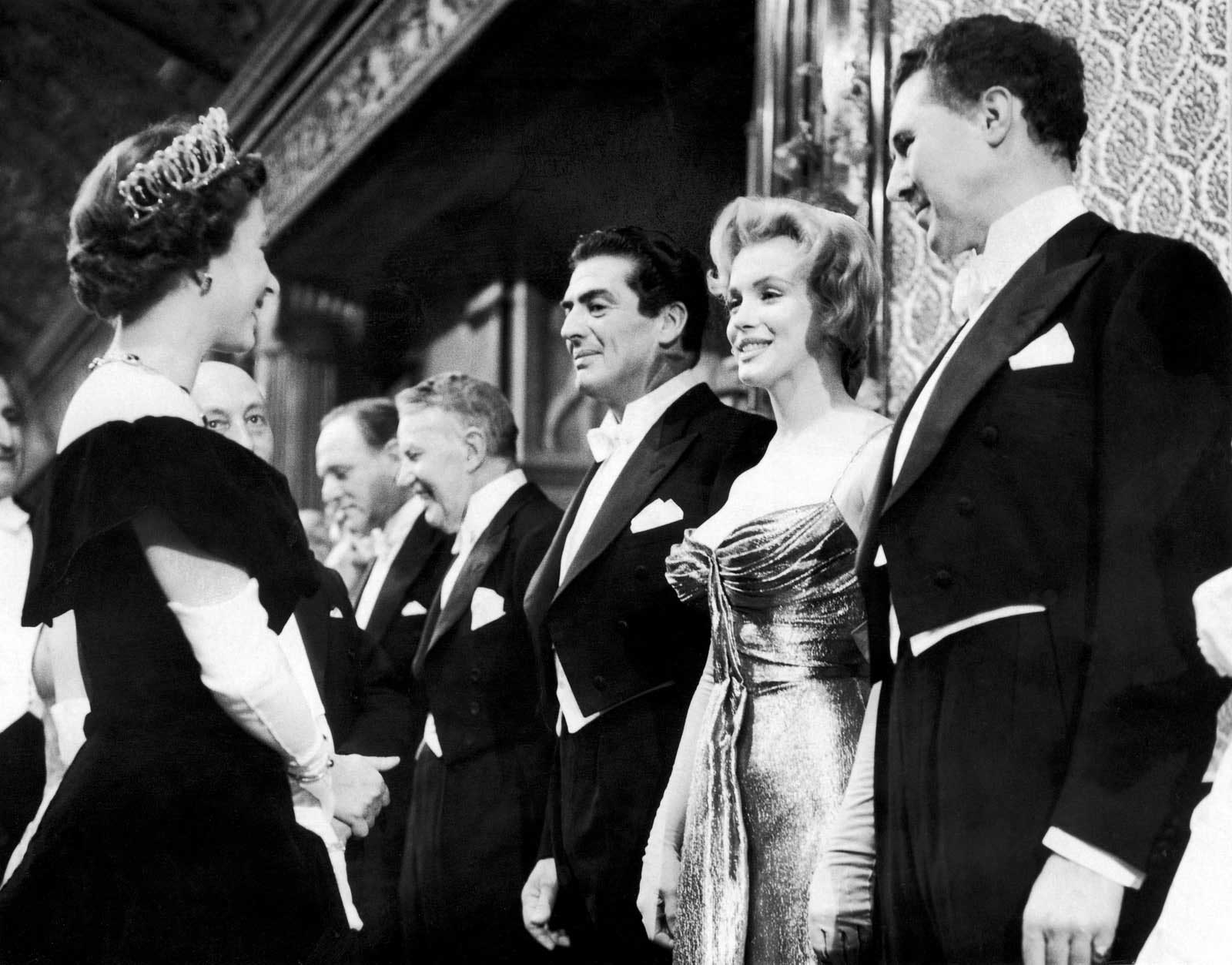
Her Majesty’s most notable appearance in black, however, came three years later, during a 1956 Royal Film Performance of The Battle of River Plate that would see her meet Marilyn Monroe, for which she wore an off-the-shoulder velvet gown and white gloves. Long afterward, when The Telegraph interviewed Hartnell about the questions he was most frequently asked re royal style, he replied: “‘Why don’t you put the Queen in black?’ Well, I did once. It was a grand first night with all the stars from Hollywood in their baubles. I persuaded the Queen to wear black velvet… Just a plain black dress. It was the greatest triumph ever.”
This article was originally published on British Vogue.
